Bots in Brief
Sticky Situation
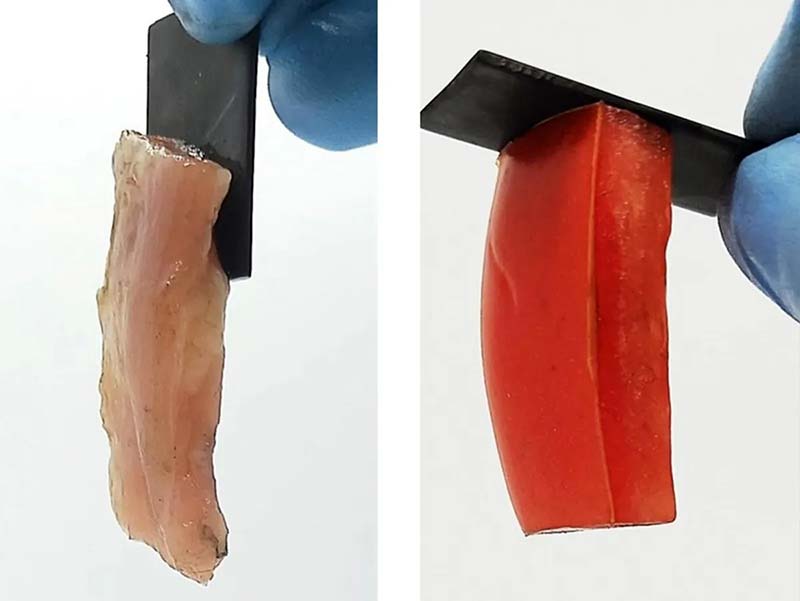
Soft materials including chicken [left] and tomato [right] permanently stick to hard surfaces just by passing electricity through them. Courtesy of ACS Central Science.
Scientists at the University of Maryland have discovered that applying electricity for a few seconds to a soft material such as a piece of raw tomato or chicken can strongly bond it to a hard object (such as a graphite slab) without any tape or glue. This unexpected effect is also reversible.
Switching the direction of the electric current often easily separates the materials, according to this new study. Potential applications for such “electroadhesion” — which can even work underwater — may include improved biomedical implants and biologically inspired robots.
“It is surprising that this effect was not discovered earlier,” commented Srinivasa Raghavan, a professor of chemical and biomolecular engineering at the University of Maryland. “This is a discovery that could have been made pretty much since we’ve had batteries.”
In nature, soft materials like living tissues are often bonded to hard objects such as bones. Previous research explored chemical ways to accomplish this feat, however, these bonds were typically irreversible.
Previously, Raghavan and his colleagues discovered that electricity could make gels stick to biological tissue. In the new study, instead of bonding two soft materials together, they explored whether electricity could make a soft material stick to a hard object.
“It’s hard for me to pinpoint one real application for this discovery,” Raghavan says. “It reminds me of the researchers who made the discoveries behind Velcro™ or Post-it™ notes — the applications were not obvious to them when the discoveries were made, but the applications did arise over time.”
Small, but Mighty
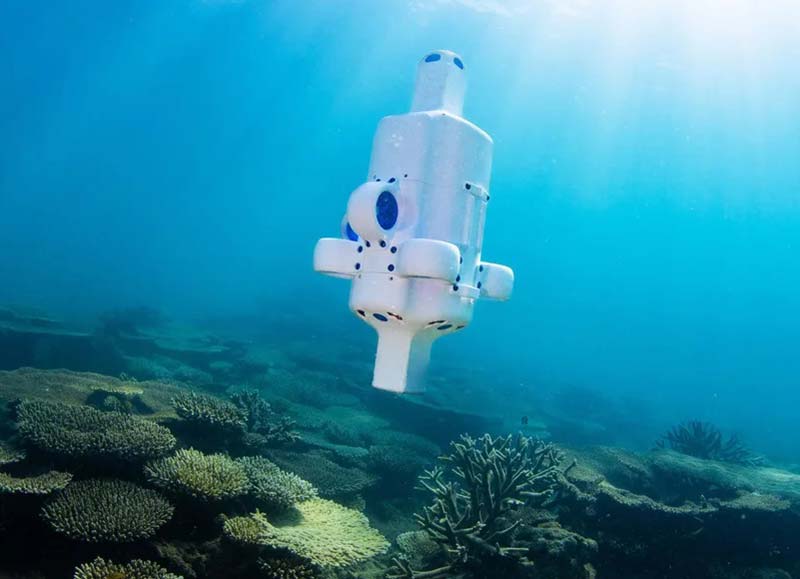
Advanced Navigation sees its new autonomous underwater vehicle, Hydrus, as the deep sea equivalent of consumer drones. Courtesy of Advanced Navigation.
The Australian company, Advanced Navigation has developed a pint-sized autonomous underwater vehicle (AUV) that it hopes will become the maritime equivalent of a consumer drone. Their new AUV is already getting to work mapping and monitoring Australia’s coral reefs and diving for shipwrecks.
The Sydney-based company has been developing underwater navigation technology for more than a decade. In 2022, Advanced Navigation unveiled its first in-house AUV called Hydrus. At less than half a meter long, the vehicle is considerably smaller than most alternatives. Plus, it’s fully autonomous and carries a 4k-resolution camera capable of 60 frames per second that can capture high-definition video and also construct detailed 3D photogrammetry models.
Advanced Navigation says Hydrus is capable of a wide variety of missions. It has a depth rating of 3,000 meters, a range of nine kilometers, and a battery that lasts up to three hours.
“If people can go and throw one of these off the boat just like they can throw a drone up in the air, that will obviously benefit the exploration of the sea,” commented Ross Anderson, from the Western Australian Museum.
Two, Two, Two Drones in One
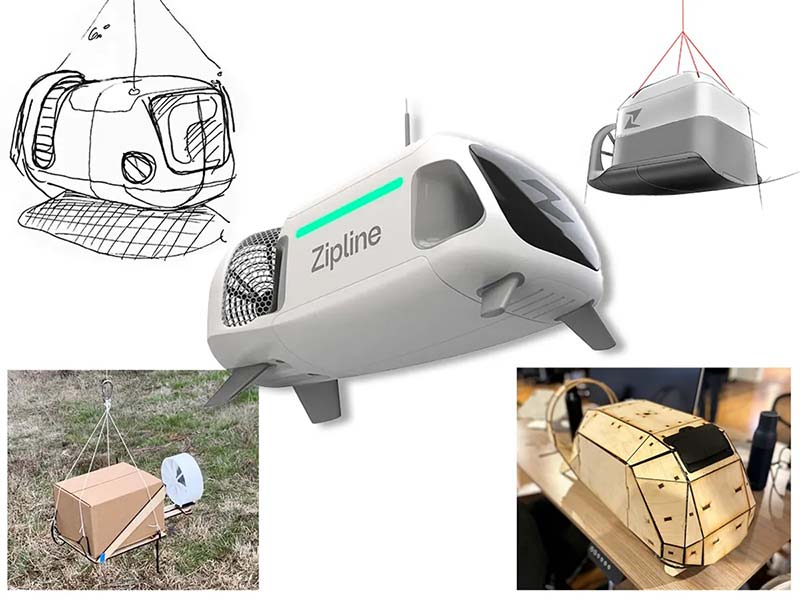
About a year ago, Zipline introduced their Platform 2: an approach to precision urban drone delivery that combines a large hovering drone with a smaller package-delivery “Droid.” Lowered on a tether from the belly of its parent Zip drone, the Droid contains thrusters and sensors (plus a 2.5- to 3.5-kilogram payload) to reliably navigate itself to a delivery area of just one meter in diameter. The Zip, meanwhile, safely remains hundreds of meters up. After depositing its payload, the Droid rises back up to the drone on its tether, and off they go.
The system has a service radius of about 16 kilometers (10 miles), and it can make deliveries to outdoor spaces of “any meaningful size.” Visual sensors on the Droid find the delivery site and check for obstacles on the way down, while the thrusters compensate for wind and movement of the parent drone. Since the big VTOL (vertical takeoff and landing) Zip remains well out of the way, deliveries are fast, safe, and quiet. It does take two robots to pull off the delivery rather than just one, however.
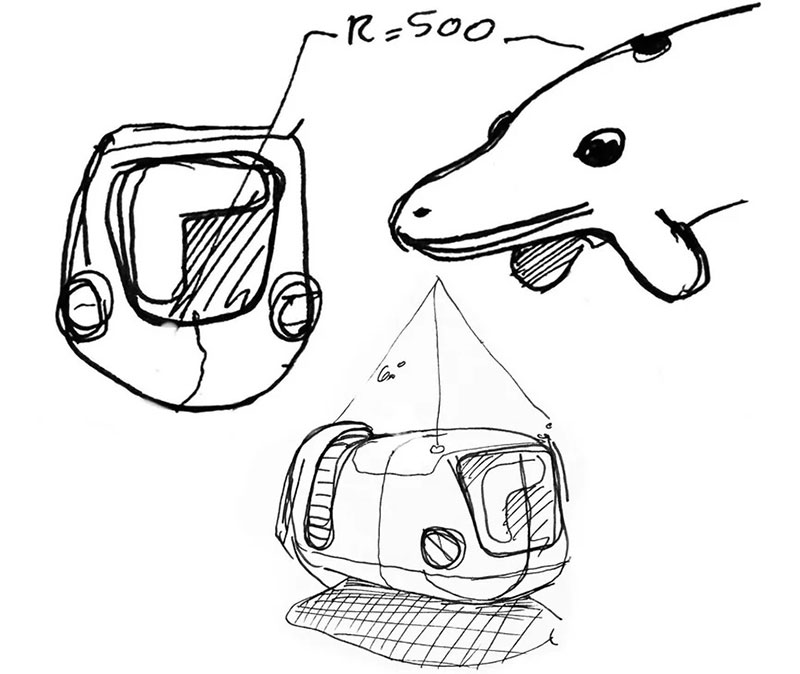
Vandenbussche’s sketches show how the design of the Droid was partially inspired by dolphins.
On the other end is the infrastructure required to load and charge these drones. Zipline’s Platform 1 drones require a dedicated base with relatively large launch and recovery systems. With Platform 2, the drone drops the Droid into a large chute attached to the side of a building so that the Droid can be reloaded, after which it pulls the Droid out again and flies off to make the delivery.
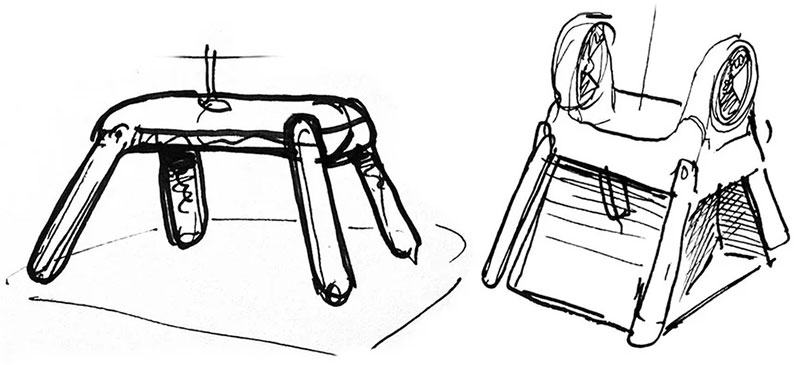
Early Droid concept sketches by designer Gregoire Vandenbussche featured legs that would fold up after delivery.
“We think it’s the best delivery experience. Not the best drone delivery experience,” Zipline’s CTO Keenan Wyrobek commented. That may be true, but the experience also has to be practical and sustainable for Zipline to be successful.
All photos courtesy of Zipline.
Article Comments